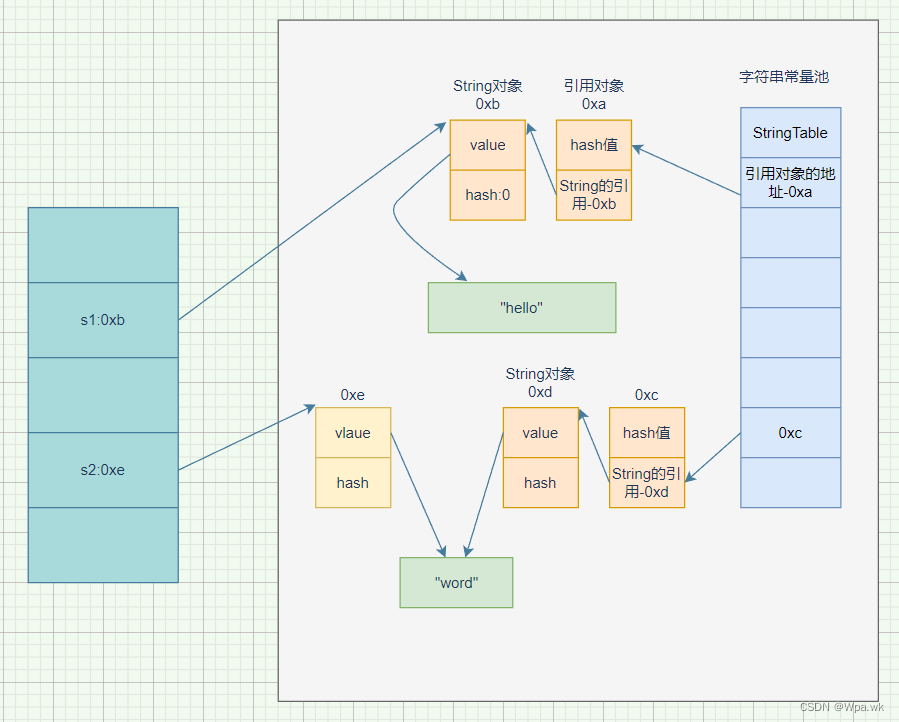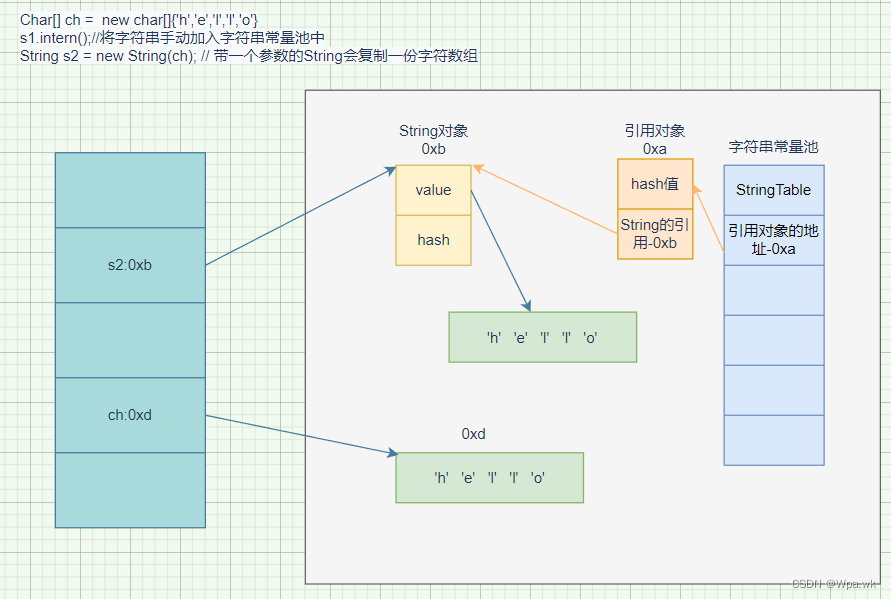文章目录
- 1.字符串 "hello" 与 new String("hello")的区别
- 2.intern()的使用;
- 总结
本文开始
1.字符串 “hello” 与 new String(“hello”)的区别
字符串常量池:存储着创建的引用地址的引用
String s1 = "hello";
String s2 = new String("word");
System.out.println(s1 == s2);//false
文字解释:
s1-“hello”:
① 先去字符串常量池中找是否有该字符串对象-此处是字符串 hello
② 如果没有,就创建字符串地址的引用对象
③ 引用对象再指向String对象
④ 最后栈上存储是String对象的地址
s2-new String(“word”): //new String(“hello”) 与new字符串word的过程一样
① 首先在堆中创建一个对象
② 再判断字符串常量池中是否存储字符串 “word” 对象
③ 没有就会创建字符串对象的引用地址,创建String对象
④ String对象value值指向该字符串“word”
⑤ 但栈上存储的只是 字符串在堆中创建的地址-这里是0xe
图示创建过程:
2.intern()的使用;
intern(): 方法的作用是手动将创建的String对象添加到常量池中;
char[] ch = new char[]{'a','b','c'};
String s2 = new String(ch);
s2.intern();
char[] ch = new char[]{'a','b','c'};
String s2 = new String(ch);
总结
✨✨✨各位读友,本篇分享到内容如果对你有帮助给个👍赞鼓励一下吧!!
感谢每一位一起走到这的伙伴,我们可以一起交流进步!!!一起加油吧!!!






真题解析#中国电子学会#全国青少年软件编程等级考试)
数列)





的“小白鼠”与“果蝇”)



,使用寄存器组导致错误原因分析)
![2023年中国汽车覆盖件模具竞争格局、市场规模及行业需求前景[图]](http://pic.xiahunao.cn/2023年中国汽车覆盖件模具竞争格局、市场规模及行业需求前景[图])

)
)
